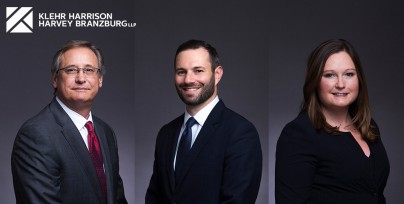U.S. Supreme Court Rejects the Government’s Property Fraud Theory and Reverses “Bridgegate” Fraud Convictions
May 12, 2020

Mark Sheppard, James Petkun and Meredith Lowry
U.S. Supreme Court Rejects the Government’s Property Fraud Theory and Reverses “Bridgegate” Fraud Convictions
Last week, the U.S. Supreme Court reversed the fraud convictions in Kelly v. United States, also known as the “Bridgegate” case. The unanimous Court rejected the government’s “property fraud” theory, which prosecutors relied upon to circumvent the Court’s previous limitations on the “honest services fraud” provision under 18 U.S.C. § 1346. The Court reiterated: “If U.S. Attorneys could prosecute as property fraud every lie a state or local official tells in making such a decision, the result would be . . . a sweeping expansion of federal criminal jurisdiction.”[1]
The facts in the Bridgegate case were as follows: Bridget Kelly, Governor Chris Christie’s former Deputy Chief of Staff, and William Baroni, a Port Authority official, were convicted of federal fraud charges for concocting a scheme with David Wildstein, a Port Authority staffer and key government witness, to punish the mayor of Fort Lee. After the Mayor refused to support Governor Christie’s reelection bid, Kelly, Baroni, and Wildstein decided to reduce the number of lanes reserved for Fort Lee commuters at the George Washington Bridge’s toll plaza for several days, causing days of heavy traffic in Fort Lee. To disguise their true motivation, Kelly and her co-defendants created a fictitious traffic study.
Federal fraud statutes criminalize schemes to defraud or deprive another of money or property, or “the intangible right of honest services.”[2] The Supreme Court in Skilling v. United States limited the “honest services fraud” provision to schemes involving allegations of bribes or kickbacks.[3] Following Skilling, federal prosecutors have relied upon “property fraud” theories to prosecute public officials in cases with no allegations of bribery or kickbacks, as was the case in Kelly v. United States,
On appeal, the Bridgegate prosecutors defended their “property fraud” theory, arguing that the defendants commandeered property (i.e. the bridge itself) and diverted wage labor of public employees who worked on the sham traffic study. The Court disagreed with this theory and reiterated that a public official’s regulatory right of “allocation, exclusion, and control” is not a property right under the federal fraud statutes. The realignment of the bridge lanes was a “quintessential exercise” of regulatory power, and the labor used to implement the fictitious traffic study was an incidental cost of the regulatory objective.[4] In reversing the convictions, the Court reasoned that “[t]o rule otherwise would undercut the Court’s oft-repeated instruction: Federal prosecutors may not use property fraud statutes to ‘set[ ] standards of disclosure and good government for local and state officials.”[5]
Takeaway
The decision in Kelly v. United States is a continuation of the Court’s precedent restraining federal prosecutors from using criminal laws to regulate state and local governments. As the Court noted, the conduct was unquestionably wrong and an abuse of power—but the conduct was not a federal crime. In the end, “bare-knuckle” politics should not be the basis for federal prosecutions. Instead, the criminalization of politics remains (and, rightly so) a bridge too far.
For more information contact Mark Sheppard, James A. Petkun, or Meredith Lowry in the white-collar defense & government investigations practice group at Klehr Harrison.
[1] Id. (Citing Cleveland v. United States, 531 U.S. 12, 24 (2000)) (quotations omitted).
[2] McNally v. United States, 483 U.S. 350, 350 (1987); 18 U.S.C. § 1346.
[3] Skilling v. United States, 561 U.S. 358, 405, 410 (2010).
[4] Kelly v. United States, 590 U.S.___ (2020) (citing Cleveland v. United States, 531 U.S. 12 (2000)).
[5] Kelly v. United States, 590 U.S.___ (2020) (Slip op.) (quoting McNally v. United States, 483 U.S. 350, 350 (1987)).


